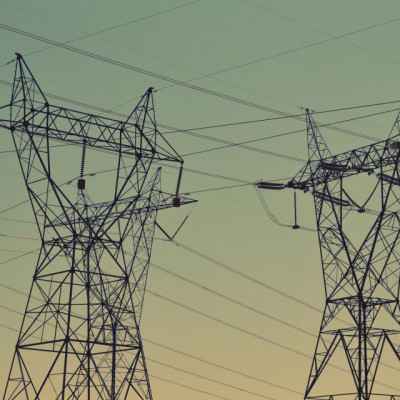November 30, 2022
November 2022 at Policy Integrity
- Policy Integrity Research Shapes New Federal Climate Damage Estimates
- Assessing Progress on Justice40
- New York’s Climate Superfund Act and Gas-Price Impacts
- Earthquakes’ Effects on Mortgage Lending
- Setting a Standard for “Clean” Hydrogen
- More From This Month
-

Policy Integrity Research Shapes New Federal Climate Damage Estimates
This month, the Environmental Protection Agency (EPA) announced the release of draft updated values for the social cost of greenhouse gas metrics. These metrics, which quantify economic damages caused by greenhouse gas emissions, help to evaluate the costs and benefits of climate-related regulations and other policy decisions. The social cost of carbon’s central value was updated from $51 per ton to $190 per ton (for emissions in 2020), consistent with similar trends in the economics literature.
Policy Integrity’s scholarship and analysis was cited more than 50 times in the update. EPA calculated damages by averaging three damage functions, one of which was based on a paper by Peter Howard and Thomas Sterner. The agency also adopted Policy Integrity's arguments for assessing damages on a global basis. EPA similarly relied on our arguments for lowering the discount rates used to determine the present value of future damages. These updated metrics will help policymakers more accurately consider climate impacts in important policy decisions.
-

Assessing Progress on Justice40
The White House Council on Environmental Quality’s (CEQ) Environmental Justice Scorecard is a mechanism that aims to hold agencies accountable in their efforts to advance environmental justice. Policy Integrity submitted comments on the scorecard on behalf of the Environmental Justice Health Alliance and Coming Clean, encouraging CEQ to use clear metrics, better assess benefits, and evaluate agencies’ baseline infrastructure for achieving environmental justice goals. As Al Huang told InsideEPA, questions abound as to how the administration will collect data; what role, if any, EJ communities will have in contributing to the scoring; and whether the flow of money alone will be considered a benefit to EJ communities regardless of how it is used.
-

New York’s Climate Superfund Act and Gas-Price Impacts
A new policy brief by Peter Howard and Minhong Xu analyzes how New York State’s recently proposed Climate Change Superfund Act is likely to affect consumer gasoline prices. The Act would require climate adaptation payments from fossil-fuel companies based on their historical contributions to current greenhouse gas levels in the atmosphere. The brief finds that the Act would likely have a negligible impact on current and near-term oil and gasoline prices, while potentially lowering future energy prices in New York, including for transportation.
-

Earthquakes’ Effects on Mortgage Lending
A paper by Minhong Xu examines how banks respond to noticeable non-damaging earthquakes (NNDEs). Using evidence from California, the paper finds that loans are more likely to be denied or sold after increased NNDEs and that these effects persist for up to three years and are driven primarily by expectations of future damaging earthquakes. Forthcoming in the Journal of Environmental Economics and Management, the paper calls for reevaluating banks' risk management approach and designing more efficient disaster risk-sharing mechanisms in the financial market.
-

Setting a Standard for “Clean” Hydrogen
The Bipartisan Infrastructure Law and Inflation Reduction Act provide major incentives for “clean” hydrogen. Now agencies need to decide what counts as clean. The Department of Energy is working on a carbon-intensity standard for clean hydrogen, and we recently recommended ways to improve the agency's analysis. One way to make hydrogen is electrolysis: using electricity to split water into hydrogen and oxygen. The carbon intensity of this method depends on the source of the electricity used. The government may end up subsidizing fossil-fuel-powered electrolysis if it calculates the carbon intensity of hydrogen based on regional carbon-intensity averages instead of the emissions rate of the specific power source that ramped up its generation to power the electrolysis plant that produced the hydrogen in question. Matt Lifson explains how clean-hydrogen analysis should work and discusses how agencies should treat renewable energy credits and power purchase agreements when measuring the carbon intensity of hydrogen produced with grid electricity. We also offered recommendations to the Department of Treasury and the Internal Revenue Service as those agencies prepare to implement clean hydrogen tax credits.
-
More From This Month
The Senate Homeland Security and Governmental Affairs Committee approved the nomination of Richard Revesz to serve as Administrator of the Office of Information and Regulatory Affairs, advancing the confirmation vote to the full Senate.
We submitted comments to:
- The Bureau of Land Management on its coal leasing plans, explaining how it should consider the climate impacts of different leasing alternatives.
- The Bureau of Safety and Environmental Enforcement, supporting its proposed rule to strengthen regulations for well control and blowout preventer systems in the Outer Continental Shelf.
- The Centers for Medicare & Medicaid Services, encouraging stronger cost-benefit analysis for its proposed rule to streamline applications and eligibility determinations for Medicaid, the Children's Health Insurance Program, and the Basic Health Program.
- The Federal Trade Commission on regulating commercial surveillance and data security practices that harm consumers.
